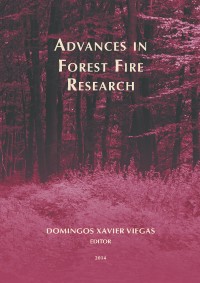Please use this identifier to cite or link to this item:
https://hdl.handle.net/10316.2/34334| DC Field | Value | Language |
|---|---|---|
| dc.contributor.author | Duff, Thomas J. | |
| dc.contributor.author | Chong, Derek M. | |
| dc.contributor.author | Cirulis, Brett A. | |
| dc.contributor.author | Walsh, Sean F. | |
| dc.contributor.author | Penman, Trent D. | |
| dc.contributor.author | Tolhust, Kevin G. | |
| dc.date.accessioned | 2014-10-24T13:37:02Z | |
| dc.date.accessioned | 2020-09-09T21:31:33Z | - |
| dc.date.available | 2014-10-24T13:37:02Z | |
| dc.date.available | 2020-09-09T21:31:33Z | - |
| dc.date.issued | 2014 | - |
| dc.identifier.isbn | 978-989-26-0884-6 (PDF) | |
| dc.identifier.uri | https://hdl.handle.net/10316.2/34334 | - |
| dc.description.abstract | Forest fires are periodic occurrences in many parts of the world. Where they coincide with human populations, they have the potential to have substantial impacts on human values. Consequently, strategies are adopted by land managers to reduce the probability of fire occurrence and, in the event of a fire, reduce subsequent impacts. One such strategy has involved the adoption of fire danger ratings. These are levels of alertness that are applied at a regional level on a daily basis. They are based on preceding and forecast weather and provide an indication of the potential severity of fire behaviour. Danger ratings are generally based on weather derived indices and have limited ability to represent the contribution of landscape attributes to potential impacts, including the properties of vegetation (fuels) and the amount and spatial configuration of vulnerable assets. We propose an alternative method for representing fire danger using fire simulation. An ensemble approach is demonstrated whereby thousands of virtual fires are ignited on a regular grid and simulated on a daily basis using forecast weather with the model PHOENIX RapidFire. Each fire is simulated in succession and burns for a specified period. Fire simulations integrate the contributions of local fuel, topography and weather to fire behaviour. The resultant fires can be aggregated to provide spatially explicit representations of potential spread patterns. These maps can be combined with asset registers to quantify potential impacts and assist with the prioritisation of response and protection measures. | eng |
| dc.language.iso | eng | - |
| dc.publisher | Imprensa da Universidade de Coimbra | por |
| dc.relation.ispartof | http://hdl.handle.net/10316.2/34013 | por |
| dc.rights | open access | - |
| dc.subject | Bushfire | eng |
| dc.subject | PHOENIX RapidFire | eng |
| dc.subject | Monte-Carlo | eng |
| dc.subject | Risk | eng |
| dc.subject | Simulation | eng |
| dc.subject | Vulnerability | eng |
| dc.subject | Weather | eng |
| dc.subject | Wildfire | eng |
| dc.title | Understanding risk: representing fire danger using spatially explicit fire simulation ensembles | por |
| dc.type | bookPart | por |
| uc.publication.firstPage | 1286 | - |
| uc.publication.lastPage | 1294 | - |
| uc.publication.location | Coimbra | por |
| dc.identifier.doi | 10.14195/978-989-26-0884-6_141 | - |
| uc.publication.section | Chapter 4 - Fire Risk Assessment and Climate Change | por |
| uc.publication.digCollection | PB | por |
| uc.publication.orderno | 141 | - |
| uc.publication.area | Ciências da Engenharia e Tecnologias | por |
| uc.publication.bookTitle | Advances in forest fire research | - |
| uc.publication.manifest | https://dl.uc.pt/json/iiif/10316.2/34334/211515/manifest?manifest=/json/iiif/10316.2/34334/211515/manifest | - |
| uc.publication.thumbnail | https://dl.uc.pt/retrieve/11174350 | - |
| uc.publication.parentItemId | 53868 | - |
| uc.itemId | 70318 | - |
| item.fulltext | With Fulltext | - |
| item.grantfulltext | open | - |
| Appears in Collections: | Advances in forest fire research | |
Files in This Item:
| File | Description | Size | Format | |
|---|---|---|---|---|
| 978-989-26-0884-6_141.pdf | 2.79 MB | Adobe PDF |  |
Items in DSpace are protected by copyright, with all rights reserved, unless otherwise indicated.
